

How Games Lead Kids to the Good Stuff: Understanding Context. Getty Part 2 of MindShift’s Guide to Games and Learning.
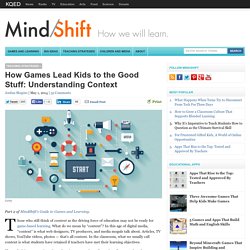
Those who still think of content as the driving force of education may not be ready for game-based learning. What do we mean by “content”? In this age of digital media, “content” is what web designers, TV producers, and media moguls talk about. Articles, TV shows, YouTube videos, photos — that’s all content. 7 Habits Of Highly-Effective Teachers Who Effectively Use Technology. 7 Characteristics Of Teachers Who Effectively Use Technology by TeachThought Staff Ed note: This post has been updated with an updated visual from Sylvia Duckworth, who took our graphic from alwaysprepped.com (now getalma) post and created the above visual.
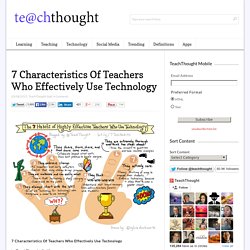
It is also sporting a new title, as the “habits of” is a trademarked term. As such, the new graphic and phrasing appears below. You can also see Sylvia’s tutorial on sketchnotes here. In most ways, teachers that use technology in the classroom aren’t much different than those that don’t. Any teacher worth their salt assesses, and then revises planned instruction based on data from those assessments. They manage their classroom in a way that works for them, create a positive learning environment, and (great teachers especially) collaborate with a variety of stakeholders to make sure every humanly possible attempt is made to meet all students need. 7 Characteristics Of Teachers Who Effectively Use Technology.
7 Habits Of Highly Effective Administrators In Education. School administration involves both management duties and leadership opportunities. The management side tends to be the stuff that one . Leadership is the stuff that one . It’s very important as an educational administrator (especially a rookie) to remember these two things i) to be a leader you need followers and ii) to gain followers one must complete management duties in a timely and efficient manner. Teachers will not care what you have to say about educational leadership if you don’t manage effectively. 25 Ways To Use Twitter In The Classroom. 10 Characteristics Of A Highly Effective Learning Environment.
10 Characteristics Of A Highly Effective Learning Environment by Terry Heick For in-person professional development from TeachThought on how to create an effective learning environment in your classroom or school, contact us today.
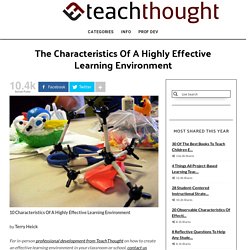
Wherever we are, we’d all like to think our classrooms are “intellectually active” places. Progressive learning (like our 21st Century Model, for example) environments. Highly effective and conducive to student-centered learning. The reality is, there is no single answer because teaching and learning are awkward to consider as single events or individual “things.” So we put together one take on the characteristics of a highly effective classroom. 1. This is not a feel-good implication, but really crucial for the whole learning process to work. Many teachers force students (proverbial gun to head) to ask questions at the outset of units or lessons, often to no avail. 2. Questions are more important than answers. 9 Characteristics Of 21st Century Learning. The label of “21st Century learning” is vague, and is an idea that we here at TeachThought like to take a swing at as often as possible, including: –weighing the magic of technology with its incredible cost and complexity –underscoring the potential for well thought-out instructional design –considering the considerable potential of social media platforms against its apparent divergence from academic learning Some educators seek out the ideal of a 21st century learning environment constantly, while others prefer that we lose the phrase altogether, insisting that learning hasn’t changed, and good learning looks the same whether it’s the 12th or 21st century.
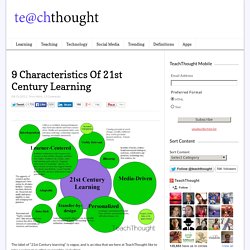
6 Characteristics Of Tomorrow's Classroom Technology. Predicting the growth of technology is impossible–in both rate and direction.
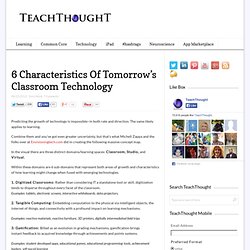
The same likely applies to learning. Combine them and you’ve got even greater uncertainty, but that’s what Michell Zappa and the folks over at Envisioningtech.com did in creating the following massive concept map. In the visual there are three distinct domains/learning spaces: Classroom, Studio, and Virtual. Within these domains are 6 sub-domains that represent both areas of growth and characteristics of how learning might change when fused with emerging technologies. 1. 2. Examples: reactive materials, reactive furniture, 3D printers, digitally intermediated field trips 3. Examples: student developed apps, educational games, educational programming tools, achievement badges, self-paced learning. A Quick Visual Guide To Education Technology. A Visual Cheat Sheet For Education Technology by TeachThought Staff Keeping up with technology is impossible, even for blogs like Mashable, Engadget, and Techcrunch that do it for a living.
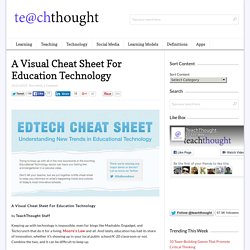
Moore’s Law and all. And lately, education has had its share of innovation, whether it’s showing up in your local public school/K-20 classroom or not. 5 Tools for Increasing Teacher Productivity. Teachers these days are up to their ears in work that must be accomplished each day.
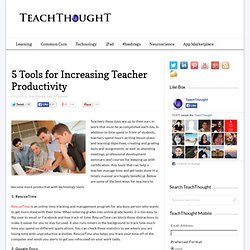
In addition to time spent in front of students, teachers spend hours writing lesson plans and learning objectives, creating and grading tests and assignments, as well as attending meetings, professional development seminars, and courses for keeping up with certification. Any tools that can help a teacher manage time and get tasks done in a timely manner are hugely beneficial.
Below are some of the best ways for teachers to become more productive with technology tools. 8 Frequent Sources Of Formative Assessment Data. 8 Frequent Sources Of Formative Assessment Data by Daniel R.
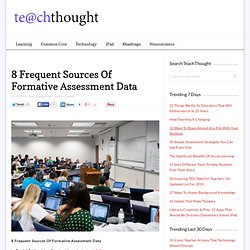
Venables, Founder of Center for Authentic PLCs Time Warner CableTM has a commercial with the tag line “Enjoy Better.” In authentic PLCs, teachers look at data for one reason: to Teach Better. 10 Ways Data Can Sabotage Your Teaching. Functionally, the purpose of assessment is to provide data to revise planned instruction.
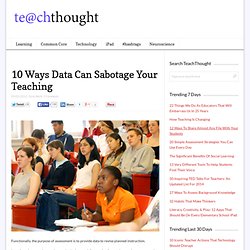
In seeing what a student understands, the best path for moving forward towards mastery can be planned based on those results—the “data,” as it were. While there are inherent (and perhaps crippling) flaws with any form of assessment (what is the best way to determine what a student understands?) , assessment design is a topic for another day.